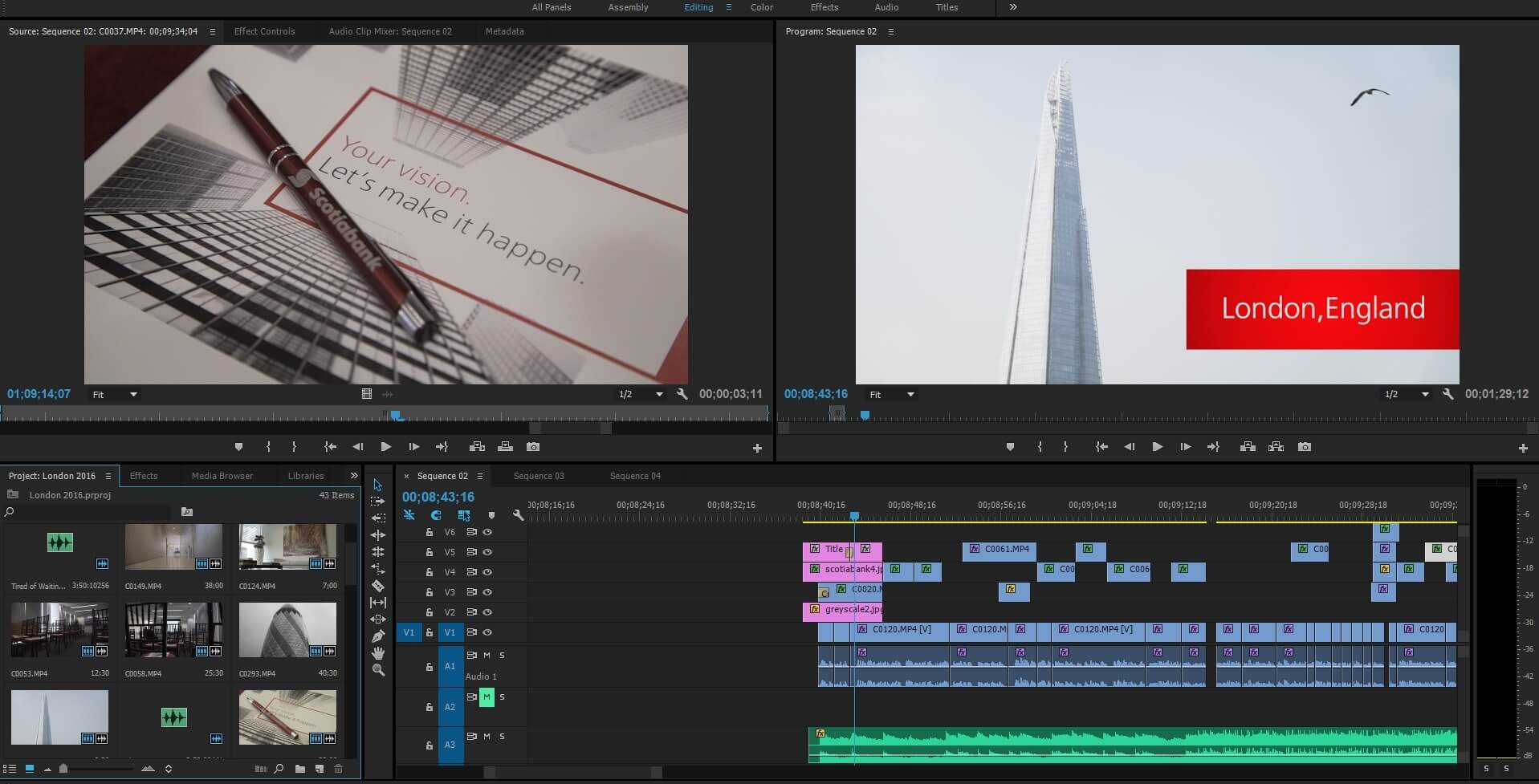Post-Production: A Comprehensive Guide
The journey of creating a captivating video doesn’t end when the cameras stop rolling; in fact, one could argue that it’s only just begun. Enter the realm of post-production, the stage where raw footage is transformed into a polished, compelling narrative that engages and inspires. This critical phase in the video production process is where creativity meets technology, breathing life into the filmmaker’s vision through editing, sound design, color grading, and visual effects.
Post-production is where the story is truly told, shaped not just by what was filmed but by how it’s put together. It’s a meticulous process that demands a keen eye for detail, a sharp ear for audio aesthetics, and a deep understanding of storytelling. From the rhythm of the edits to the hue of the visuals and the ambiance of the sound landscape, every decision made in post-production serves to enhance the emotional impact and clarity of the message.
In this blog post, we’ll delve into the essential components of post-production, exploring the techniques and technologies that bring stories to life on screen. Whether you’re a seasoned filmmaker or new to the world of video production, understanding the post-production process is key to creating work that resonates with your audience and stands the test of time.
- Overview of Post-Production
- Editing: Crafting the Story
- Sound Design: Bringing the Story to Life with Audio
- Color Grading and Correction: Painting with Light
- Visual Effects (VFX): Elevating the Narrative Beyond Reality
- Review and Revisions: Perfecting the Final Product
- Finalizing and Delivery: Ready for the Spotlight
- Conclusion: The Final Touch in the Tapestry of Video Production
- Let's Create Your Video Today
- Frequently Asked Questions
Overview of Post-Production
Post-production is the final stage of the video production process, a creative and technical marathon where the project comes together. This phase encompasses several key components, each with its own set of skills, tools, and objectives, working in harmony to craft the final product. Here’s what it involves:
- Editing: The cornerstone of post-production, editing involves selecting the best footage and arranging it to tell the story effectively. This process determines the flow, pace, and ultimately, the impact of the video, making it resonate with the audience.
- Sound Design: Often underestimated, sound design is crucial for setting the scene and conveying emotion. It encompasses everything from cleaning up dialogue to adding sound effects and music, enriching the narrative and immersing the viewer in the video’s world.
- Color Grading and Correction: This step enhances the visual appeal of the video, ensuring consistency across shots and setting the tone and style through color. It’s where the visual mood is fine-tuned, aligning the imagery with the story’s emotional arc.
- Visual Effects (VFX): From subtle enhancements to grand visual spectacles, VFX can be used to create elements that are impossible or impractical to capture on camera. It’s a powerful tool for expanding the video’s visual narrative.
Each of these components plays a vital role in the post-production process, contributing to the creation of a cohesive, engaging, and polished final product. Through the careful integration of editing, sound design, color grading, and visual effects, post-production turns the raw material captured during production into a compelling story ready to be shared with the world.

Editing: Crafting the Story
At the heart of post-production lies the editing process, where the raw footage is transformed into a cohesive narrative. This stage is not just about cutting and joining clips but about storytelling, pacing, and creating an emotional journey for the audience. Here’s what the editing process entails:
- Assembling the Footage: The first step is to go through all the footage, selecting the best takes and arranging them according to the storyboard or script. This rough cut forms the backbone of the narrative, laying out the story’s structure.
- Narrative Flow and Pacing: Editing is an art form that balances the dynamics of the story, ensuring a rhythm that keeps the audience engaged. Editors work to maintain continuity, build tension, and provide relief at just the right moments, guiding the viewer through the narrative.
- Transitions and Effects: Strategic use of transitions and effects can enhance the storytelling, creating seamless connections between scenes or highlighting key moments. However, the key is subtlety; the best edits are those that go unnoticed, serving the story rather than distracting from it.
- Collaboration with Directors and Producers: Editing is a collaborative process, involving feedback and revisions from the director, producer, and sometimes other stakeholders. This iterative process ensures that the final edit aligns with the project’s vision and objectives.
- The Role of the Editor: Beyond technical skills, a good editor brings a deep understanding of storytelling, rhythm, and audience engagement. They are storytellers in their own right, with the power to shape the viewer’s experience through the pace, flow, and emotional impact of the video.
Editing is where the magic of cinema comes to life, turning hours of raw footage into a story that moves, entertains, and inspires. It’s a meticulous and creative process that lies at the core of post-production, essential for realizing the vision of the film or video project.

Sound Design: Bringing the Story to Life with Audio
Sound design is an integral component of post-production that goes far beyond simply adding background music or sound effects. It’s about crafting an auditory experience that complements the visual narrative, enriches the emotional depth, and immerses the audience in the story’s universe. Here’s how sound design shapes the final video:
- Dialogue Editing and Cleaning: The clarity of dialogue is paramount. Sound designers work meticulously to clean up the recorded dialogue, removing unwanted noise and ensuring each word is heard clearly, maintaining the authenticity and emotion of the performances.
- Sound Effects and Foley: Sound effects and Foley artistry add texture and realism to the video. Whether it’s the subtle rustling of leaves or the impactful roar of an engine, these sounds are crucial for creating a believable and engaging environment.
- Ambient Sounds: Ambient sounds help to establish the setting and mood. The gentle hum of a cityscape or the serene silence of a snowy landscape can transport viewers, making the scene more vivid and relatable.
- Music: Music plays a powerful role in storytelling, capable of conveying unspoken emotions and connecting with the audience on a deeper level. Selecting the right music—whether it’s a rousing score or a gentle melody—can significantly enhance the emotional impact of a scene.
- Mixing and Mastering: The final step in sound design is mixing and mastering, where all audio elements are balanced and integrated into a cohesive whole. This process ensures that dialogue, music, and sound effects are harmoniously blended, with adjustments made for optimal listening across various platforms and devices.
The art of sound design is essential in breathing life into the visual content, creating a multisensory experience that captivates and moves the audience. Through careful attention to audio detail, sound designers play a pivotal role in transforming the video into an immersive and emotionally resonant masterpiece.
Color Grading and Correction: Painting with Light
Color grading and correction are where the visual aesthetics of a video truly come to life, providing filmmakers with the ability to enhance mood, establish time and place, and evoke specific emotions through color. This crucial post-production process involves a blend of technical precision and artistic expression.
- Color Correction for Consistency: The first step, color correction, ensures that every shot matches in terms of lighting, white balance, and color consistency. This is vital for maintaining visual continuity across different scenes and lighting conditions, providing a seamless viewing experience.
- Color Grading for Mood and Style: Following correction, color grading is applied to establish the overall look and feel of the video. This can range from the subtle application of color to enhance natural beauty or the creation of a stylized palette that complements the narrative’s tone. Color grading can transport viewers to another world, signify changes in time, or highlight emotional shifts within the story.
- Tools and Techniques: Advanced software and tools enable colorists to manipulate hues, saturation, contrast, and brightness with precision. Techniques like the use of LUTs (Look-Up Tables) can help achieve specific visual styles or emulate the look of film stocks, contributing to the video’s unique aesthetic.
- The Impact of Color: The psychological impact of color on the audience is profound. Warm tones can evoke feelings of comfort and nostalgia, while cool tones might convey detachment or tension. The strategic use of color grading can significantly enhance the narrative, guiding the viewer’s emotional response to the story.
- Collaboration in the Creative Process: Colorists work closely with directors and cinematographers to ensure the color grading aligns with the directorial vision and cinematography. This collaborative process ensures that the visual tone of the video supports the storytelling from beginning to end.
Color grading and correction are not just about making the video look “better”; they’re about enhancing the storytelling through visual means. This stage of post-production is where the visual identity of the piece is finalized, enveloping the audience in the intended atmosphere and emotion of the story.

Visual Effects (VFX): Elevating the Narrative Beyond Reality
Visual Effects (VFX) stand at the forefront of innovation in video production, offering filmmakers the tools to create worlds, characters, and phenomena that go beyond the constraints of physical reality. VFX can subtly enhance the narrative or play a central role in storytelling, depending on the project’s demands.
- Enhancement and Creation: VFX can be employed for both enhancing existing footage and creating entirely new elements or environments. From adding realistic weather effects to crafting fantastical creatures, VFX broadens the scope of what’s possible on screen.
- Seamless Integration: The magic of effective VFX lies in its invisibility to the audience. Whether it’s erasing wires and rigs or integrating digital elements into live-action footage, the goal is to support the story seamlessly, without drawing attention away from the narrative.
- Technological Advances: The evolution of VFX technology, including CGI (Computer-Generated Imagery), motion capture, and compositing, has opened up endless possibilities for storytelling. Filmmakers can now bring the most imaginative visions to life with unprecedented realism and detail.
- Collaboration Across Departments: Successful VFX work is highly collaborative, requiring close coordination between directors, cinematographers, VFX artists, and other departments. This teamwork ensures that visual effects enhance the narrative cohesively, matching the director’s vision and the film’s overall aesthetic.
- Balancing Practical and Digital Effects: While VFX can achieve remarkable results, the best outcomes often come from a blend of practical effects captured during production and digital enhancements in post-production. This combination can lend a greater sense of realism and physicality to the final product.
- Storytelling Power: Beyond technical wizardry, the true power of VFX lies in its ability to serve the story. Whether creating immersive worlds or subtle enhancements, the aim is always to deepen the audience’s emotional engagement and belief in the story’s universe.
Visual effects offer a canvas on which filmmakers can paint their most ambitious visions, breaking the boundaries of reality to bring new dimensions to storytelling. In the post-production process, VFX artists work meticulously to ensure these visual elements elevate the narrative, captivating audiences with stories that resonate long after the screen fades to black.
Review and Revisions: Perfecting the Final Product
The journey through post-production is one of refinement and precision, culminating in the review and revisions phase. This critical step involves scrutinizing the nearly completed project, gathering feedback, and making necessary adjustments to ensure the final video aligns with the initial vision and goals.
- Initial Reviews: The process begins with initial screenings for the director, producers, and key creative team members. This is a chance to assess the video’s overall flow, performance, and alignment with the project’s objectives.
- Feedback and Collaboration: Constructive feedback is essential, providing insights and perspectives that may have been overlooked. Collaboration during this phase is key, as it often requires balancing differing opinions to refine the video in a way that satisfies all stakeholders.
- Technical and Creative Revisions: Revisions can range from minor edits, such as trimming scenes for pacing, to significant changes, like reworking sound design or adjusting color grading. Each revision is aimed at enhancing the storytelling, visual appeal, and emotional impact of the video.
- Iterative Process: Review and revisions can be an iterative process, with several rounds of feedback and adjustments. The goal is to progressively refine the video until all parties are satisfied with the final product.
- Final Approval: Once the video undergoes thorough review and all necessary revisions are made, it moves to final approval. This is the moment when the video is deemed complete and ready for rendering and delivery.
The review and revisions phase is a testament to the collaborative nature of video production, highlighting the importance of feedback, expertise, and the shared goal of creating a compelling and polished final product. It’s a process that demands patience, open-mindedness, and a commitment to excellence, ensuring that the final video not only meets but exceeds expectations.
Finalizing and Delivery: Ready for the Spotlight
The culmination of the post-production process is the finalizing and delivery stage, where all elements of the video are rendered together, and the project is prepared for distribution. This phase marks the transition from creation to consumption, ensuring the video is ready to make its mark on the audience.
- Rendering the Final Cut: Once approvals are secured, the final cut undergoes rendering—a process where all visual and audio elements are compiled into a single, high-quality file. This step requires powerful computing resources, as it involves combining edited footage, sound mixes, color-graded images, and visual effects into the final video.
- Quality Checks: Before delivery, the rendered video undergoes rigorous quality checks. This includes reviewing technical specifications, such as resolution, frame rate, and aspect ratio, as well as ensuring there are no encoding errors or glitches. It’s crucial that the video meets the highest standards for viewer experience.
- Exporting in Various Formats: Depending on the distribution channels, the video may need to be exported in multiple formats. Each platform, from broadcast television to online streaming services, has specific requirements for video files. Creating optimized versions for each ensures the best possible playback quality and compatibility.
- Delivery to Clients or Distributors: With the final versions ready, the video is delivered to clients, distributors, or directly to the platforms where it will be viewed. This can involve digital transfers, physical media, or uploads to content management systems, depending on the project’s scope and distribution strategy.
- Archiving: After delivery, it’s important to archive the project files, including raw footage, project files, and final renders. This not only serves as a backup but also allows for future revisions or repurposing of the content.
Finalizing and delivery is a meticulous process that bridges the gap between the creative efforts of the production team and the audience’s experience. It’s the final checkpoint in the video production journey, ensuring that the story crafted with so much care, skill, and creativity is presented in the best possible light, ready to engage, entertain, and inspire viewers.
Conclusion: The Final Touch in the Tapestry of Video Production
Post-production stands as the final, pivotal chapter in the story of video creation—a phase where technical expertise converges with creative vision to polish and perfect the narrative. It is here, in the crucible of editing, sound design, color grading, and visual effects, that a collection of raw footage is transformed into a cohesive, compelling story ready to captivate audiences.
This journey through post-production has unveiled the meticulous processes behind editing, the artistry of sound, the magic of color, and the wonder of visual effects, all coming together to elevate the narrative beyond the ordinary. Each step, from the initial cut to the final render, is imbued with the potential to deepen the emotional resonance of the story, enrich the visual experience, and ensure the message not only reaches but profoundly impacts its audience.
As we wrap up this exploration, it’s clear that post-production is not merely a phase of refinement but a stage of rebirth, where the vision is realized, and the story is truly told. It underscores the collaborative spirit of filmmaking, the dedication to craft, and the relentless pursuit of excellence that defines the art of video production.
Whether you’re a filmmaker at the beginning of your journey or a seasoned professional, the post-production process offers endless possibilities to inspire, challenge, and transform. It invites us to see not just with our eyes, but with our hearts and minds, crafting stories that endure and resonate.
As you embark on your next project, remember that post-production is your canvas, and the tools and techniques at your disposal are your palette. With creativity, patience, and attention to detail, you have the power to bring your visions to life in ways that enchant, enlighten, and entertain.
Let’s Create Your Video Today
If you’re looking for top-notch quality, industry expertise, dependability, and competitive pricing, don’t wait any longer. Contact us now for a quote and let’s get started on your project.




